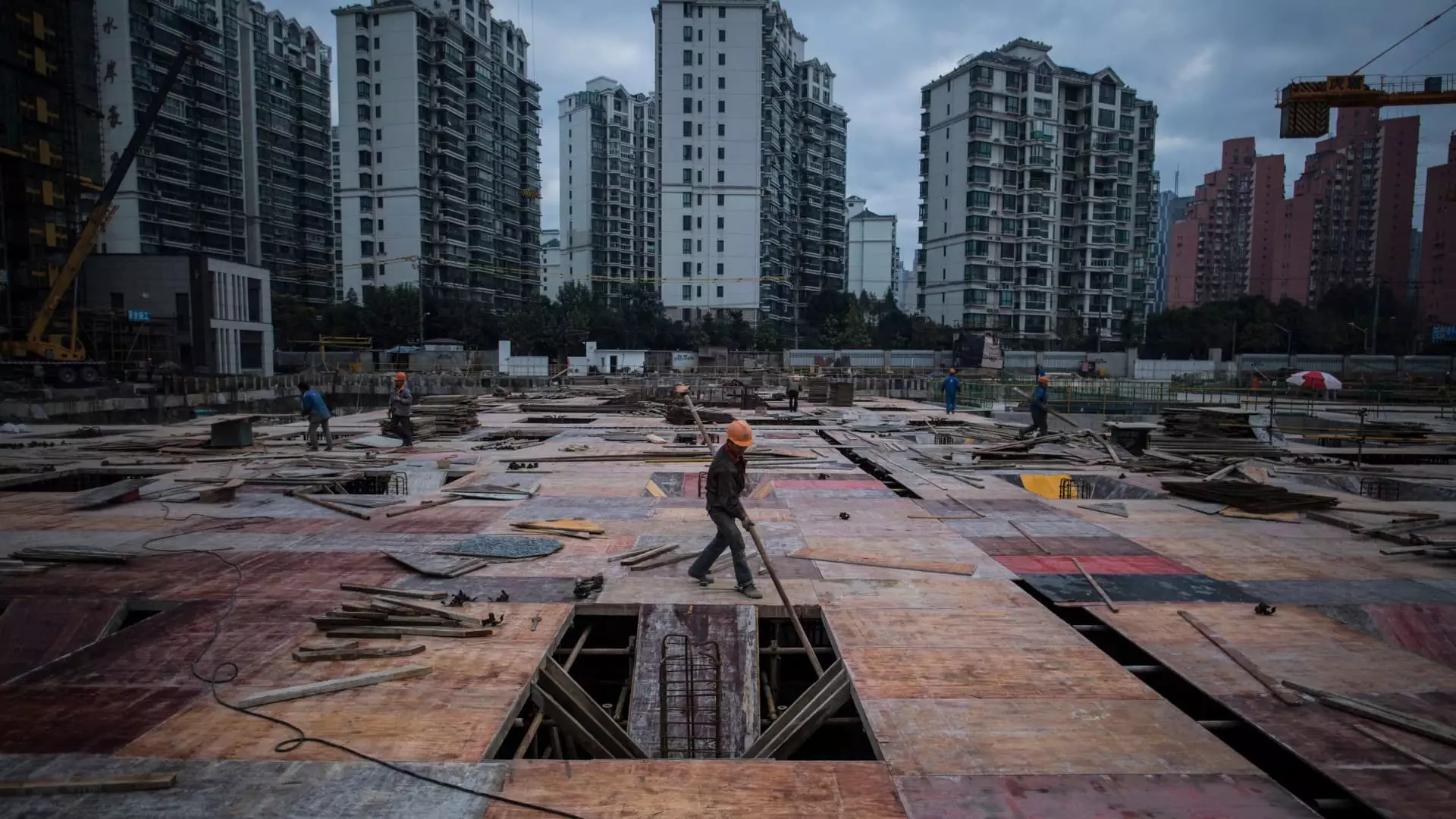The Chinese property market has long been a barometer of the country’s economic health, and recent measures aimed at revitalizing this sector have sparked renewed discussions among analysts and stakeholders alike. Despite some indications of recovery during the recent Golden Week holiday, the overall landscape reveals a complex interplay of temporary boosts and underlying challenges that threaten longer-term stability in real estate.
Recent reports from the China Index Academy indicated a surge in home sales during the week-long holiday, an event traditionally associated with robust consumer spending. In particular, Beijing showcased an impressive 81% jump in daily home sales over the same holiday period last year, surprising many industry observers. However, this localized spike begs the question of sustainability, as cities like Shanghai, Guangzhou, and Shenzhen experienced sharp declines in sales ranging from 57% to 61%.
While a 23% year-on-year increase in home sales during the Golden Week might suggest a positive trend, the broader context tells a different story. The overall average daily sales have dropped from highs of 177,000 square meters in 2021 to just 107,000 square meters in the recent holiday. This declining trajectory raises concerns about the efficacy of temporary stimulus measures; what appears as a holiday bump may simply highlight a troubling long-term pattern of contraction in the real estate market.
The Chinese government has responded to these market difficulties with a series of easing measures, including lowering mortgage rates, reducing down-payment requirements, and increasing the quotas for home purchases. While these initiatives certainly aim to improve consumer sentiment among homebuyers, experts warn that they are merely stop-gap solutions. William Wu from Daiwa Capital Markets emphasizes that without more robust and sustained interventions, the market is unlikely to achieve true stability.
Moreover, experts from various financial institutions, including Goldman Sachs, stress that these measures do not directly address critical issues such as excessive inventory and incomplete projects left in the wake of failed developments. Kenneth Ho, the chief credit strategist at Goldman Sachs, articulated that the lack of comprehensive policies aimed at resolving “excess inventories” ultimately hinders meaningful improvement in the property sector.
The challenges confronting China’s property market extend beyond mere sales figures. The persistent prevalence of cash-strapped developers and the weight of massive unsold inventories paint a dire picture. Even with a temporary upswing in sentiment from holiday sales, the structural issues plaguing the sector remain unaddressed. Many developers continue to grapple with outstanding debts and investor confidence wanes as prices keep plunging.
Analysts including Zhiwei Zhang from Pinpoint Asset Management highlight the disparity between tier 1 cities and the broader national market, noting that even cities with improved sales constitute a minor fraction of the overall property landscape. Thus, while there are glimmers of hope, they do not suffice to counteract the significant headwinds stemming from widespread financial struggles within the sector.
While China’s recent stimulus measures and localized sales surges during the Golden Week holiday have sparked optimism in some quarters, the broader narrative remains bleak. The market is ensnared in an intricate web of issues characterized by high inventory levels, developer defaults, and sluggish sales trends. Analysts emphasize that any short-term gains must be viewed with caution, as they are unlikely to herald a sustained recovery without more forceful policy actions targeting the fundamental problems.
Moving forward, it is essential for policymakers to adopt a more comprehensive approach, addressing not just the symptoms of a struggling market but also the root causes of its ailments. If the Chinese property sector is to reclaim its past dynamism and serve as a pillar for economic growth, it will require not just temporary relief measures, but innovative and strategic reforms tailored to its unique challenges. Only time will determine whether such actions will be implemented effectively and with the necessary urgency.

Leave a Reply